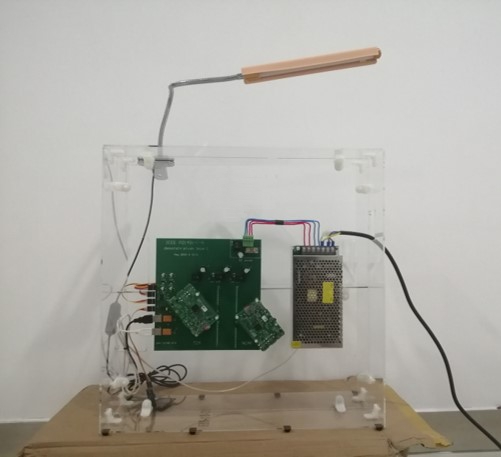Interoperability Tests with Our Demonstration System
1. Get Your Hands Dirty!
To get started, choose an SNMP client and install it. In this article, net-snmp is used as the example.
Linux
For some distros, try installing net-snmp (or the client only) with the native package manger:
# On Debian-based systems:
sudo apt install snmp
# On RHEL-based systems:
sudo yum install net-snmp-utils
Otherwise, you should, unfortunately, build it from source following the steps in this page.
You may want to verify your installation by running:
snmpget --version
Run the following command as the hello-world routine:
snmpget -v 2c -c public 47.88.61.169 1.3.6.1.2.1.1.1.0
If you see something like this:
iso.3.6.1.2.1.1.1.0 = STRING: "Greetings from IEEE P21451-1-5 Working Group, Shanghai Jiao Tong University, Shanghai, China"
Congratulations! Your machine is now fired up.
Update of 09/30/20
We have also opened a non-default port
10010for testing. If you have trouble sending the above message, try this:snmpget -v 2c -c public 47.88.61.169:10010 1.3.6.1.2.1.1.1.0
Windows
(…)
2. Access Our Demo Remotely
Description of the Demonstration System
We expose the following sensors and actuators to remote testers:
- A temperature sensor
- A photosensitive sensor
- A humidifier
- A lamp
- An LCD screen
Here is a picture of the system:

From the standpoint of SNMP programs, each of these transducers is seen as a variable, either read-only or read/write. Each variable has a unique identifier, called OID. In our example, we put all these variables under a certain subtree. Thus, their OIDs have a common prefix: 1.3.6.1.4.1, which is named enterprise and is the parent node of most enterprises and organizations.
The reset part of these OIDs are illustrated with this tree view:
# Output of `snmptranslate -Tp IEEE-P1451-SIMPLE-DEMO-MIB::sjtu'
+--sjtu(7934)
|
+--ieeeP1451Project(1451)
|
+--ieeeP1451Sensor(1)
| |
| +-- -R-- INTEGER seTemperature(1)
| | Range: 0..255
| +-- -R-- INTEGER seLight(2)
| Range: 0..255
|
+--ieeeP1451Actuator(2)
|
+-- -RW- EnumVal acLamp(1)
| Values: off(0), on(1)
+-- -RW- EnumVal acHumidifier(2)
| Values: off(0), on(1)
+-- -RW- String acLcd(3)
For example, acLamp is the variable standing for the lamp in our demonstration system. It is the first child node (.1) of ieeeP1451Actuator, who in turn is the second child node (.2) of ieeeP1451Project, who again is the 1451st child node (.1451) of sjtu, who is the 7934th child node (.7934) of enterprise (1.3.6.1.4.1). Therefore, the complete OID of acLamp is 1.3.6.1.4.1.7934.1451.2.1.
OIDs, among other attributes of these variables, are specified in the MIB file IEEE-P1451-SIMPLE-DEMO-MIB.txt.
Having known the OIDs, we are now able to access the corresponding transducers using SNMP SET/GET messages.
Sensors (Read-Only)
# Read the current value of the temperature sensor
snmpget -v2c -c public 47.88.61.169 1.3.6.1.4.1.7934.1451.1.1.0
# Read the current value of the photosensitive sensor
snmpget -v2c -c public 47.88.61.169 1.3.6.1.4.1.7934.1451.1.2.0
Actuators (Read/Write)
# Read the current on/off status of the lamp
snmpget -v2c -c public 47.88.61.169 1.3.6.1.4.1.7934.1451.2.1.0
# Turn on the lamp
snmpset -v2c -c public 47.88.61.169 1.3.6.1.4.1.7934.1451.2.1.0 i 1
# Turn off the lamp
snmpset -v2c -c public 47.88.61.169 1.3.6.1.4.1.7934.1451.2.1.0 i 0
# Read the current on/off status of the humidifier
snmpget -v2c -c public 47.88.61.169 1.3.6.1.4.1.7934.1451.2.2.0
# Turn on the humidifier
snmpset -v2c -c public 47.88.61.169 1.3.6.1.4.1.7934.1451.2.2.0 i 1
# Turn off the humidifier
snmpset -v2c -c public 47.88.61.169 1.3.6.1.4.1.7934.1451.2.2.0 i 0
# Read the current content on the LCD screen
snmpget -v2c -c public 47.88.61.169 1.3.6.1.4.1.7934.1451.2.3.0
# Change the display content on the LCD screen
# (It is appreciated if you can leave a message here telling us where you are conducting this test!)
snmpset -v2c -c public 47.88.61.169 1.3.6.1.4.1.7934.1451.2.3.0 s "Hi, I am Rick from universe C-137."
Update of 09/30/20
We have also opened a non-default port
10010for testing. If you have trouble sending the above messages, try replacing the47.88.61.169part with47.88.61.169:10010.